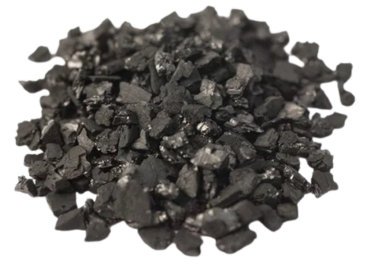Specialty Activated Carbon: Impregnated for Enhanced Adsorption of Specific Pollutants

Impregnated Activated Carbon undergoes a process where specific chemicals or substances are introduced to enhance its capacity to adsorb or remove targeted contaminants from air or water. This typically involves immersing the activated carbon in a solution containing the desired impregnating material, allowing for even distribution throughout its porous structure. This modification significantly improves its performance for particular applications.
Impregnated Activated Carbon: Materials Used
Impregnated activated carbon begins with a base material of activated carbon, which itself is derived from various carbon-rich sources. These precursors are the same as those used for other types of activated carbon and include:
- Coconut shells: Valued for their hardness and ability to create a microporous structure.
- Coal: Different grades offer varying pore size distributions suitable for diverse applications.
- Wood: Can provide a broader range of pore sizes, often with a higher proportion of macropores.
- Other carbonaceous materials: Such as nutshells, peat, and even some synthetic polymers, depending on the desired properties.
This base activated carbon material, typically in granular, powdered, or extruded form, undergoes the standard production process of carbonization followed by activation (either physical with steam or CO2, or chemical using agents like phosphoric acid or potassium hydroxide) to develop its extensive porous structure and high surface area.
The defining characteristic of impregnated activated carbon is the introduction of specific chemical compounds or substances onto the surface of the activated carbon pores. This impregnation process is carried out to enhance the activated carbon’s ability to adsorb or react with targeted contaminants that are otherwise difficult to remove effectively by standard activated carbon alone.
Impregnated Activated Carbon: Production Process
The impregnation process typically involves the following steps:
- Preparation of the Impregnating Agent: The chosen chemical is dissolved or suspended in a suitable solvent, often water. The concentration of the impregnating agent is carefully controlled based on the desired loading and the target application.
- Contacting the Activated Carbon: The activated carbon is brought into contact with the impregnation solution. This can be achieved through various methods, including soaking, spraying, or mixing the carbon with the solution. The contact time and temperature are carefully controlled to ensure proper penetration of the impregnating agent into the pore structure of the activated carbon.
- Drying and Curing: After impregnation, the treated activated carbon is carefully dried to remove the solvent. In some cases, a curing or heat treatment step may follow to fix the impregnating agent onto the carbon surface, promoting a chemical reaction or enhancing its stability.
The types of impregnants used vary widely depending on the target contaminant:
- Potassium hydroxide (KOH) or Sodium hydroxide (NaOH): Used to enhance the removal of acidic gases like hydrogen sulfide (H2S) and sulfur dioxide (SO2).
- Potassium iodide (KI) or Sodium iodide (NaI): Effective for the removal of mercury and radioactive iodine species.
- Silver (Ag): Impregnated for its antimicrobial properties in water purification and air filtration.
- Copper (Cu) or Copper oxide (CuO): Used for the removal of hydrogen sulfide and other sulfur-containing compounds, as well as certain volatile organic compounds (VOCs).
- Phosphoric acid (H3PO4): Enhances the adsorption of ammonia and other basic compounds.
- Potassium permanganate (KMnO4): Used for the oxidation and removal of certain organic compounds and hydrogen sulfide.
- Triethylenediamine (TEDA): Effective for the removal of acid gases and some organic vapors.
In essence, impregnated activated carbon is a composite material where the high surface area and porosity of the activated carbon provide the foundation for adsorption, and the incorporated chemical impregnant introduces a specific affinity or reactivity towards targeted pollutants, significantly enhancing the overall removal efficiency for those particular substances. The choice of base activated carbon and the specific impregnant are crucial in tailoring the final product for its intended application.
Your Trusted Source for Industrial Excellence: Building Enduring Success Together: AP Air-Liquid Industrial Equipment Trading is your reliable partner for high-quality industrial supplies. We are dedicated to providing the products and support you need to achieve sustained success and build a stronger, more efficient future for your business.
